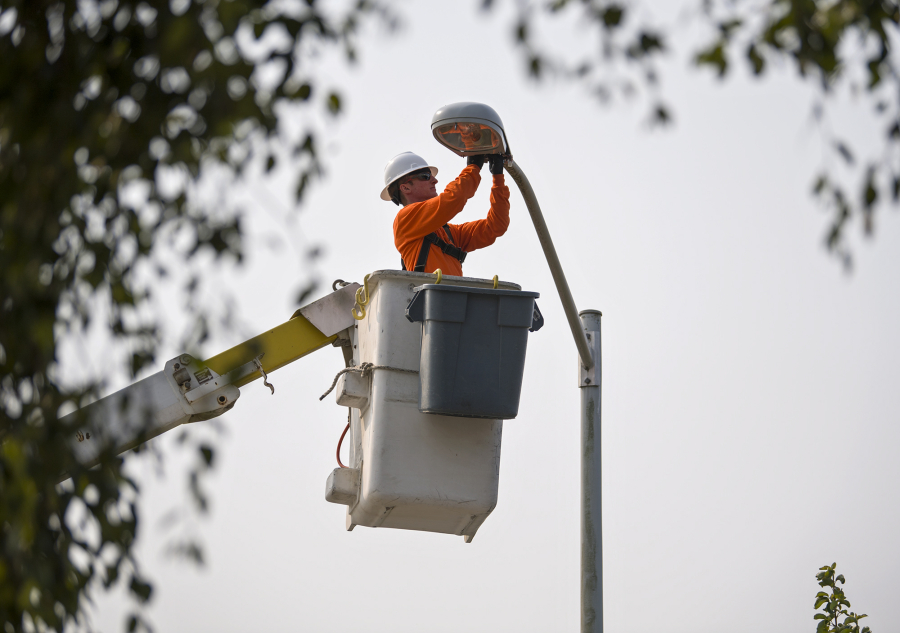By next spring Clark County’s unincorporated neighborhoods won’t look the same after sundown.
A contractor working for Clark Public Utilities is replacing 23,000 streetlights from old high-pressure sodium bulbs to new LED-style ones.
The new lights last significantly longer and use a fraction of the energy of their predecessors. Utility district customers will start seeing the savings in the next calendar year.
Most of the LEDs require about 60 percent less energy than the high-pressure sodium bulbs. Plus, they have a useful life of more than 20 years, compared with the four- to six-year lifespan of the old lights. That energy efficiency and longer lifespan mean customers will pay less for power and less for maintenance.
The $2.6 million project is being funded by the utility, an incentive from the Bonneville Power Administration, and a $350,000 grant from the Washington Department of Commerce. Justin Andrews, a streetlighting specialist with Clark Public Utilities, said the project’s cost is expected to be paid back in about four years by the energy and maintenance savings.
“On our rate scale, to give back to the customers, we’re basing these fixtures on a 25-year lifespan,” he said. “So that’s where they will see the decrease in their maintenance costs on their monthly average for the LEDs.”
The work is being done by DJ’s Electrical Inc. in three phases. The first phase will replace 13,000 streetlights in subdivisions and county streets. Lights in rural areas and on commercial properties will be replaced later.
For residents, the new lights might take some getting used to. The lights won’t have the same ambient effect the previous streetlights did; shields inside the fixtures will keep the light focused on the streets and sidewalks and away from homes.
Also, people might also notice the lights’ color being brighter and warmer compared with their predecessors, but Andrews said it won’t be as blue as typical LEDs.
The utility chose lights at the 3000 Kelvin range — the measurement of color temperature — after running a few pilot studies. Officials also took heed from American Medical Association articles that said bluer LED lights can have negative health effects on the eyes and disrupt circadian rhythms.
Some municipalities have installed LED lights with color temperatures between 4,000 and 5,000 Kelvin (which is the temperature of daylight), but Andrews said some customers didn’t want that in their neighborhoods.
“The feedback we were getting from other customers is they hoped we weren’t going to go with (higher temperature) fixtures,” Andrews said. “The majority of our lights are in residential neighborhoods, so to go with a 4,000 K, you’re just putting that much more light into someone’s window, which, obviously, we try to avoid all together.”
Whether residents see light fixtures upgraded on their streets depends on the city they live in. The cities own and manage their own streetlights.
In 2016 the city of Vancouver applied for a $5 million low-interest loan Public Works Assistance Account to replace 12,000 of the more than 17,000 city-owned streetlights with LEDs, but the funds have yet to be approved.
According to Andrews, Camas recently changed its lights to LEDs. Ridgefield upgraded many of their lights a couple years ago, and is looking to finish the rest in the near future.
Washougal and Battle Ground recently went out to bid to convert their streetlights to LED.




